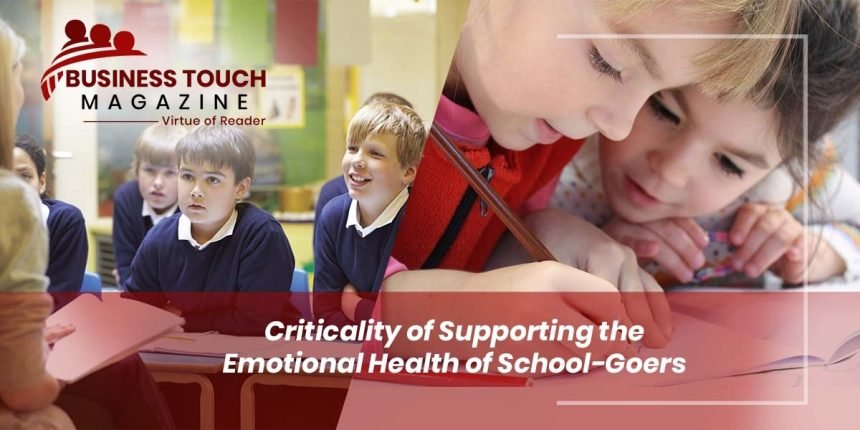When dealing with stressful events, we all have our own unique set of demands and coping mechanisms as adults. It’s the same with kids or schoolgoers. Restrictions and school closures due to the pandemic of COVID-19 will have affected some youngsters positively.
Teachers and other school staff are essential in assisting children’s return to classroom learning after long periods of absence from school. Students’ academic and emotional well-being may be safeguarded when schools reopen by using the tools instructors have been employing to this end while they were closed:
1. Pay Attention To School-Goers
To be effective teachers, we must listen to our students’ issues and display empathy and understanding. Allow your pupils to speak with you one-on-one when their school is closed to reacquaint themselves and address any issues that may have developed. If the emotional health of students raises a red flag, please use the child protection or child safety procedures that have been put in place.
2. Observe Your Children’s Progress
Teachers and school staff should check in with pupils to see how they are doing before introducing new academic material. Keep in mind that youngsters may have difficulties focusing first or want more time to get back into the swing of things academically and academically oriented. Make it possible for youngsters to take a break and reconnect with their friends and classmates.
3. Educate Students About COVID-19 By Providing Them With Factual Information.
When students return to school, they may have new questions and opinions about COVID-19. Factual knowledge is what children need and require. Answer children’s questions about COVID-19 using age-appropriate and child-friendly materials available in your nation or area based on scientific evidence.
While acknowledging the worldwide scope of the situation is critical, the reopening plans for the school should stress all the work made and safeguards taken to avoid hazards. Teach your pupils how to handle a COVID-19 outbreak and mental pressure in the classroom, and make sure they know what to do.
4. A Warm, Safe And Pleasant Learning Environment Might Come From The Children.
Involve the students in transforming the classroom into a friendly, secure, and inviting place. Make careful you adhere to school safety rules and utilize any available resources.
Young school goers may make ideas; adorn the classroom walls with welcome messages; work in small groups to assist each other, catch up on their studies, and help each other with homework. Remember to acknowledge and reward your child’s achievements and endeavours. They deserve it. To make children feel safe and secure, teachers may connect with each student, build good relationships, and use routines throughout the day.
5. Avoid Warning Signals That A Child’s Behavior Interferes With Their Capacity To Discover Via Play And Study.
If you see a dramatic shift or mental pressure in a student’s behaviour that continues for an extended period, please follow school policy and seek further help and direction. Teachers can assist students who they believe need it. However, if you believe the kid requires specialized care, you should seek extra assistance and send them to child protective services, primary care doctors, or mental health specialists.
To help a youngster who is struggling to learn or focus, give them additional help or slow down the speed of their lessons.
6. Students Should Be Encouraged To Play And Participate In Sports To Build Relationships With One Another.
In many countries, children are required to keep a safe distance from their peers and are not allowed to play in public settings such as playgrounds. By school safety guidelines, as soon as students return to school, make sure that they have plenty of opportunities to meet and play with their classmates.
7. Show Kids How To Cope Well By Becoming Good Role Models. Calm, Honest And Empathetic Behavior
Teachers must provide an excellent example for their pupils. The coping mechanisms you use daily to cope with complex events will serve as an example for your children. Demonstrate a calm, honest, and compassionate demeanor while dealing with youngsters.
Help from a professional may be required if a kid has an ongoing pattern of the emotional health of students (e.g., nightmares, excessive emphasis on fears, increased aggressiveness, regressive behaviours, or self-harm) that does not improve with support. When in-person social interaction is prohibited, mental health practitioners may deliver treatments through “telehealth” (i.e., counselling via telephone or online platform) when in-person social interaction is prohibited.
Supporting Students’ Emotional Well-Being at School Is Critical
The emotional health of students, social, and psychological selves are part of our mental health. It impacts our perceptions, emotions, thoughts, and ultimately our actions. The basis of solid mental health must be created in the formative years for every adult, just as every adult’s foundation is built in their early years.
In the same way that eating and exercise are essential for physical development, we must also recognize the significance of mental health knowledge. Taking the time to focus on our thoughts and emotions may help us overcome any obstacles that life throws our way. To have an open discussion with the children, it is essential to tell them that everyone who has a body and a brain must take care of their bodily and mental well-being. Our first focus should be figuring out ways to raise healthier and happier children.
Mental wellness is essential for a school goers success in life, whether at school or with friends. There will be no stigma associated with mental health if we instil this development mentality in ourselves and our children. Don’t let your shame keep you from reaching out for assistance.
We all become worried and terrified from time to time. Allowing oneself the opportunity to express ideas and emotions should be encouraged. Children should be taught that they are not alone in their worries and that asking for assistance is perfectly acceptable.
Final Thoughts
Instead of being critical and proposing answers, show empathy and compassion for the child’s changing moods and mental pressure. Providing unconditional affection and praising the youngster anytime they perform well is very advised. Giving directions might come later, but starting with a listening ear is a terrific place to start. We support replacing nagging and screaming with respectful discipline. We must embrace our children’s skills and shortcomings to achieve our ultimate goal of “I want my kid to be happy.”
Mental health is all about happiness. All children are born joyful, but they lose that happiness as they grow older. Growing up becomes a problematic endeavour at any age when we strive to keep up with others and others’ expectations of us. Everyone needs to confront the music they listen to on their own, and there is no instruction manual for life. Encouraging children to believe that they can do great things and live healthy, happy lives is a great way to help them succeed.




